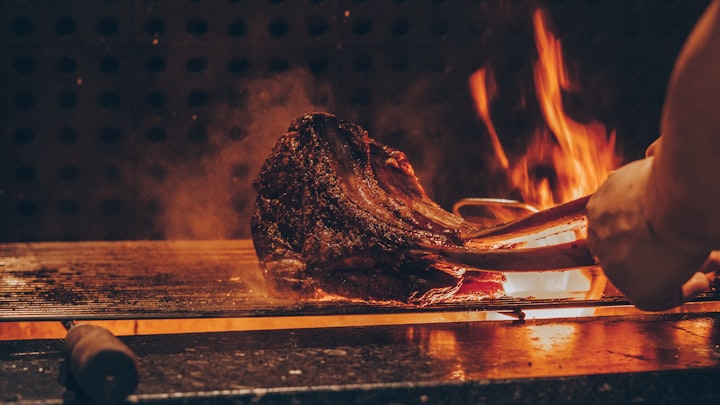More than you ever wanted to know about turkey
A rabbit hole, which journeys across ancient civilisations, trade, the dark ages and the new world.

This was originally going to be a short article on why a turkey was called a turkey. However, upon further research, I stumbled down a bit of a rabbit hole, which journeys across ancient civilisations, trade, the dark ages and the new world. Keep reading if you want to know more about Turkey[1], turkeys and an imposter turkey than you ever wanted.
We know that the name of the country that straddles Europe and the Asia came before the name of the bird (and we will explore this later). We also know that the bird likely received a non-canonical name before the country as it was domesticated approximately 2,000 years ago by the Aztecs.[2]
The Bird
So why is the turkey (the bird) named after Turkey (the country)? There are two prevailing theories, and third dubious one:
-
The bird arrived in Great Britain from the Americas via a trade route in Constantinople. The "Turkey coq" had the second part of its named dropped by the British and it was hence named turkey.
-
The American turkey was not the first large wild fowl that Europeans ate. The original came from Guinea in West Africa, imported again to Europe by Turkish merchants. For similar reasons as above, it came to be known as a turkey. When British colonisers first arrived in Massachusetts, they decided to call the new-found (and larger) wild fowl by the name they already had given to the guinea fowl.
-
The dubious theory is that Columbus's interpreter Luis de Torres, who was a Jewish convert, named the turkey after tuki, the ancient Hebrew word for "peacock". This has later been rebutted by the president of the Association for the Study of Jewish Languages.[3]
The Country
Turkey as a country has its own uncertain etymology, which at some stage was used as an autonym[4] by the Göktürks of Central Asia.[5] From a similar time period, Chinese sources present the etymology of the name Turk as being derived from "helmet",[6] or Tóukuī (头盔) in mandarin.
The History
Coincidentally, the West African fowl that the turkey was confused with is actually called the helmeted guinea fowl.[7] The guinea fowl was around in Europe during the time of the Ancient Greeks[8] and Romans[9], having been imported from the Ancient Egyptians[10]. However, it appears that there is no mention of these birds by their Roman or Greek names and so it was likely that they were wiped out with the fall of the Western Roman Empire.[11] That is probably why the name for the bird ended up being the guinea fowl, where Guinea as a name was only around since the mid 15th century.[12] Ironically, the remnants of the Eastern Roman Empire eventually reintroduced them into Europe.
More Quirks
Bringing this all together, the scientific name of the turkey is Meleagris gallopavo, where gallo comes from Rooster in Latin (gallus) and pavo comes from the Latin word for peacock. So really, the turkey's Latin name[13] is the guinea-fowl-rooster-peacock. I'm convinced that between Torres naming the bird after an ancient Hebrew peacock, the British being unable to distinguish between the guinean fowl and the turkey, and the lost history of its original Latin name, no one really cared what the meaty bird was called.
Funnily enough, people around the world don't call the turkey "turkey". In fact, a lot of countries name it after India, because Columbus wanted to be in the Indies. The Turks call the turkey hindi and in Hindi, the bird is called tarki.[14]
Or, now; Türkiye. ↩︎
It is actually native to North America, and had evolved there over 20 million years ago; https://en.wikipedia.org/wiki/Turkey_(bird). ↩︎
https://www.theatlantic.com/international/archive/2014/11/why-americans-call-turkey-turkey/383225/. ↩︎
Defined as a self-referential or native name. ↩︎
https://en.wikipedia.org/wiki/Name_of_Turkey#cite_note-8. ↩︎
https://en.wikipedia.org/wiki/Name_of_Turkey#cite_note-10. ↩︎
Mentioned in Homer's Iliad as a meleagrides, which the grieving sisters of the slain Meleager were turned into by Artemis; https://en.wikipedia.org/wiki/Meleager#cite_note-2. ↩︎
Used in a recipe in an ancient Roman Cookbook; https://www.gutenberg.org/files/29728/29728-h/29728-h.htm#r239. ↩︎
https://cluckin.net/the-history-and-origin-of-guinea-fowl.html. ↩︎
But not the Latin that was used by the people who actually spoke Latin. ↩︎
https://www.npr.org/2008/11/27/97541602/why-a-turkey-is-called-a-turkey?t=1653860146244. ↩︎



